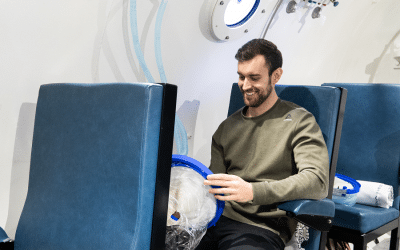Abstract: Hyperbaric oxygen therapy (HBO2) increases tissue oxygenation, thus serving as an adjunct therapy for diabetic wounds. However, in some patients there is insufficient increase in tissue O2. To investigate the pathophysiology of insufficient HBO2 and the...
Diabetes
Hyperbaric Oxygen Therapy (HBOT) Research for Diabetes.
Mathematical model of hyperbaric oxygen therapy applied to chronic diabetic wounds.
Abstract: The failure of certain wounds to heal (including diabetic foot ulcers) is a significant socioeconomic issue for countries worldwide. There is much debate about the best way to treat these wounds and one approach that is shrouded with controversy is...
Hyperbaric oxygen stimulates vasculogenic stem cell growth and differentiation in vivo
We hypothesized that oxidative stress from hyperbaric oxygen (HBO2, 2.8 ATA for 90 min daily) exerts a trophic effect on vasculogenic stem cells.
The efficacy of hyperbaric oxygen (HBO2) for healing refractory wounds in diabetic patients and those with radiation injuries has been shown in randomized trials, and its utilization is supported by independent evidence-based reviews (6, 10, 20, 32, 38). Mechanisms of action for HBO2 are not clear. The goal of this study was to examine the impact of HBO2 on vasculogenic stem cells in an in vivo animal model.
Treatment of diabetic foot infection with hyperbaric oxygen therapy.
Abstract: This study was performed to evaluate the effectiveness of hyperbaric oxygen therapy (HBOT) in the treatment of the infected diabetic foot. Forty-two patients with 44 infected diabetic feet receiving HBOT were divided into two groups. One group of 21 patients...
A three species model to simulate application of Hyperbaric Oxygen Therapy to chronic wounds.
Abstract: Chronic wounds are a significant socioeconomic problem for governments worldwide. Approximately 15% of people who suffer from diabetes will experience a lower-limb ulcer at some stage of their lives, and 24% of these wounds will ultimately result in...
The case for evidence in wound care: investigating advanced treatment modalities in healing chronic diabetic lower extremity wounds.
Abstract: Major complications of diabetes mellitus include lower leg and foot ulcers, which can result in amputation. Further study is needed to determine optimal treatments for these challenging wounds. Growth factor therapy and hyperbaric oxygen (HBO) treatments are...
Management and prevention of diabetic foot ulcers and infections: a health economic review.
Abstract: Diabetic foot ulcers and infections are common and incur substantial economic burden for society, patients and families. We performed a comprehensive review, on a number of databases, of health economic evaluations of a variety of different prevention,...
N-terminal pro-B-type natriuretic peptide levels increases after hyperbaric oxygen therapy in diabetic patients.
Abstract: Diabetic patients receive hyperbaric oxygen therapy for non-healing lower extremity ulcers. Exposure to hyperbaric hyperoxia during hyperbaric oxygen therapy may affect cardiovascular functions by different mechanisms. Patients may experience serious...
Biological basis of diabetic foot wounds.
Abstract: The steps to achieving a healthy healing wound include a correct diagnosis, ensuring a good local blood supply, debriding the wound to reveal a clean base, correcting the biomechanical abnormality, and nurturing the wound until it shows signs of healing....

